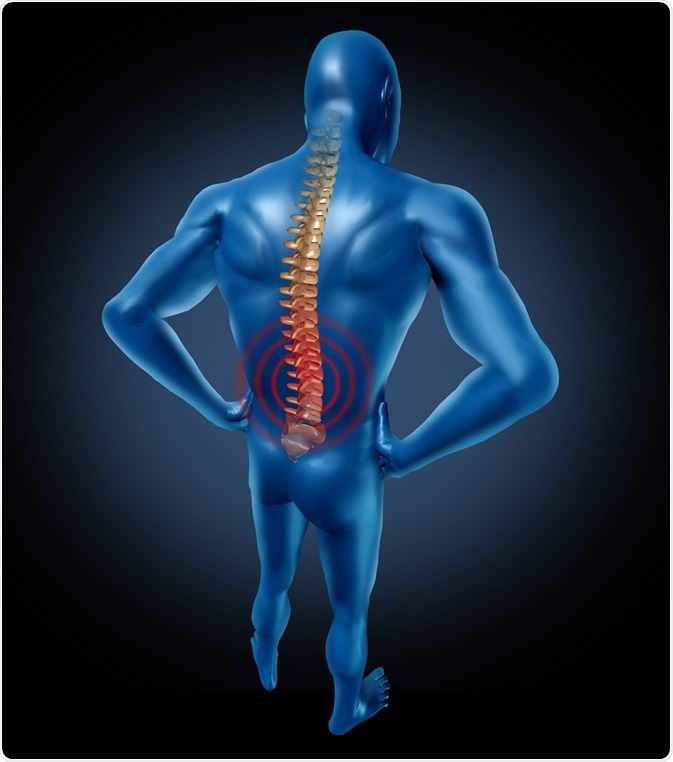For The Latest Medical News, Health News, Research News, COVID-19 News, Pharma News, Glaucoma News, Diabetes News, Herb News, Phytochemical News, Thailand Cannabis News, Cancer News, Doctor News, Thailand Hospital News, Oral Cancer News, Thailand Doctors
Spinal muscular atrophy (SMA) is a genetic disorder which is caused by the absence of the SMN1 (survival of motor neurons 1) protein-encoding gene on chromosome 5 (5q13). This is present in all cells and is important in the formation of the splicesome (the body which is required for the splicing of the pre-mRNA transcript inside the cell).

This is in some way especially important for the function of motor neurons. With low concentrations of the SMN protein in the motor neuron cells, they die out and the motor action units are reduced.
All patients with SMA lack normal activity of both alleles of the SMN1 gene on chromosome 5. In 95% it is due to a homozygous gene deletion or conversion from SMN1to SMN2, but in a small percentage it is due to subtle mutations; to the presence of the two alleles on the same chromosome with the same mutation on both, and no corresponding allele on the other chromosome; or due to a de novo mutation on one allele.
The severity of the consequences of losing this gene is modified by the number of copies of the other form of the gene, namely, SMN2. This gene has a nucleotide substitution which leads to the non-inclusion of exon 7 in the mRNA transcript which causes the protein formed to be nonfunctional and unstable. However, in 10-15% of the transcripts, exon 7 is present which causes the formation of full-length mRNA and a normal protein.
The higher the number of SMN2 copies, therefore, the lower the chances of severe disease. However, this is not the only modifier, and in some cases only 2 copies of the gene are present along with mild disease.
This was explained by the presence of another mutation which introduced a new exon splice enhancer causing higher production of the SMN protein. Thus, more work is required to elucidate the number and action of the genetic modifiers of the clinical severity of SMA. This is crucial to provide an accurate prognosis during genetic counseling and for the clinical usefulness of newborn SMA screening.
With the discovery of the SMN gene, many animal models were developed which helped to understand the underlying changes in the motor action units. For instance, a combination of two SMN2 genes with no SMN1 genes caused severe phenotypes in mice, but when eight SMN2 genes were introduced the evidence of clinical disease disappeared.
In this way it was found that by increasing the expression of the full-length SMN transcript, more of the functional protein could be produced and the phenotype could be altered towards the normal side of the spectrum.
This not only provided the proof of concept that such a therapeutic approach was rational and potentially effective, but also allowed for testing such treatment methods with investigation of resulting changes in the biochemical and molecular pathways in affected animals.
Many workers have focused on the development of drugs which increase SMN2 gene expression such as:
These showed great promise in mouse models by activation of the SMN2 gene promoter, but failed to impact on humans. Factors such as the following need to be further studied:
Many other small molecules have also been developed and are being studied in relation to their specific effect on SMN2 gene splicing and hence increased full-length SMN mRNA transcription.
Many research groups are working on altering the process of SMN2 splicing so as to ensure that exon7 is included in the mRNA transcript. Some approaches which have passed preclinical trials include:
Work is now on to pass these molecules through human clinical trials to assess their usefulness and methods of optimum application.
The first SMA mouse rescue occurred by the introduction of an adenovirus-associated vector serotype 9 (scAAV9), and inspired tremendous work in this direction. The most important finding to date has been that the timing of the injection is crucial, since the effect reduces with advancing delay from the day of birth and appears to be nil after a period of time.
This may indicate a very short window of time for effective gene therapy in humans with type I SMA especially, to prevent motor neuron loss, and could push up the importance of newborn screening in children following the birth of an affected sibling or to a carrier couple. However, more research needs to be done to determine the period of usefulness.
Stem cells are also being explored to harness their potential to replace dying and dead motor neurons in SMA. Primary neural stem cells and pluripotent stem cells from embryonic stem cells have been used successfully in mice, and induced pluripotent stem cells have now been produced from patient fibroblasts which could speed up the development of compatible neuron replacements in this manner.
The challenges for the future remain to develop measures of outcome, determine the best markers of success, and conduct valid trials while still maintaining standards of supportive care for existing SMA patients. It will also be necessary to work out how to detect presymptomatic patients and to select the best therapies for further development.